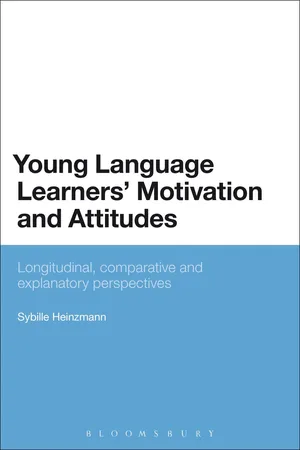Psychology
The Gilchrist and Nesberg study of motivation
The Gilchrist and Nesberg study of motivation explored the impact of intrinsic and extrinsic motivation on task performance. They found that intrinsic motivation, driven by internal factors such as personal interest and enjoyment, led to higher quality performance and greater persistence compared to extrinsic motivation, which is driven by external rewards or pressures. This study highlighted the importance of intrinsic motivation in fostering optimal task engagement and performance.
Written by Perlego with AI-assistance
Related key terms
1 of 5
4 Key excerpts on "The Gilchrist and Nesberg study of motivation"
- No longer available |Learn more
- (Author)
- 2014(Publication Date)
- College Publishing House(Publisher)
______________________________ WORLD TECHNOLOGIES ______________________________ Chapter 5 Motivation Theory Motivation is the driving force by which we achieve our goals. Motivation is said to be intrinsic or extrinsic. The term is generally used for humans but it can also be used to describe the causes for animal behavior as well. This refers to human motivation. According to various theories, motivation may be rooted in a basic need to minimize physical pain and maximize pleasure, or it may include specific needs such as eating and resting, or a desired object, goal, state of being, ideal, or it may be attributed to less-apparent reasons such as altruism, selfishness, morality, or avoiding mortality. Conceptually, motivation should not be confused with either volition or optimism. Motivation is related to, but distinct from, emotion. Motivation concepts Intrinsic and extrinsic motivation Intrinsic motivation refers to motivation that is driven by an interest or enjoyment in the task itself, and exists within the individual rather than relying on any external pressure. Intrinsic motivation has been studied by social and educational psychologists since the early 1970s. Research has found that it is usually associated with high educational achievement and enjoyment by students. Explanations of intrinsic motivation have been given in the context of Fritz Heider's attribution theory, Bandura's work on self-efficacy, and Deci and Ryan's cognitive evaluation theory. Students are likely to be intrinsically motivated if they: • attribute their educational results to internal factors that they can control (e.g. the amount of effort they put in), • believe they can be effective agents in reaching desired goals (i.e. the results are not determined by luck), • are interested in mastering a topic, rather than just rote-learning to achieve good grades. Extrinsic motivation comes from outside of the individual. - eBook - PDF
Cognitive Motivation
From Curiosity to Identity, Purpose and Meaning
- David Beswick(Author)
- 2017(Publication Date)
- Cambridge University Press(Publisher)
The new theoretical perspective, which no longer limited purposive behaviour to the relationship of instrumental acts to extraneous goals, was brought into a central position in the study of motivation by White in Forms of Cognitive Motivation 70 70 his analysis of ‘the concept of competence’ which was opposed to tension reduction models (White 1959). The term ‘intrinsic motivation’ came into general use around 1970, exemplified by the papers presented at the Toronto conference ‘Intrinsic motivation: A new direction in education’ in that year (Day, Berlyne and Hunt 1971). Independently, several papers were published at about the same time which reported suppressing effects of extrinsic rewards on intrinsic motivation (Deci 1971; Kruglanski, Friedman and Zeevi 1971; Lepper, Greene and Nisbett 1973). These papers heightened interest in the nature of intrinsic motivation. Bruner, some years earlier, had recommended a ‘the shift from extrin- sic to intrinsic rewards’ to promote learning by discovery (Bruner 1962, p. 83). He took note of the reports of mathematicians, physicists and historians on their experience with new curricula, in which he noted ‘repeatedly an expression of faith in the powerful effects that come from permitting the student to put things together for himself, to be his own discoverer’ (Bruner 1962, p. 82). One such curriculum that was being evaluated at Harvard at about that time was the one developed by the School Mathematics Study Group (SMSG) at Yale in which an appeal to intrinsic motivation was noted: After making a content analysis of the SMSG textbooks one investigator remarked, ‘The experimental book is trying to draw a child from life as he knows it to life as he doesn’t know it. Motivation is here – the arousal of curios- ity beyond the life area which he knows. - eBook - PDF
Young Language Learners' Motivation and Attitudes
Longitudinal, comparative and explanatory perspectives
- Sybille Heinzmann(Author)
- 2013(Publication Date)
- Bloomsbury Academic(Publisher)
This absence of interest in other research traditions can be explained by the fact that language learning was considered to be in some ways funda-mentally different from other types of academic learning, as language is not just a communication coding system but also an integral part of the individual’s identity. Therefore, language learning raises issues of identity. Learning a language not only involves cognitive factors, but also, and maybe more impor-tantly, affective factors (see Dörnyei, 1994a, p. 274; Gardner, 1985, p. 146). While motivation research within the social psychological framework has directed attention precisely at these affective factors, educational psychology has concentrated more on cognitive factors. Cognitive theories of motivation stress the importance of mental structures, beliefs and cognitive processing. The remainder of section 2.2 provides some insight into the most influential cognitive theories of motivation developed in the field of educational psychology. Figure 2.4 Extended model of language learning motivation 1 Self-Concept Motivation Language Attitudes Ethnolinguistic Vitality Theoretical Perspectives on Motivation 25 2.2.1 Self-Determination theory The general tenets of the theory The main proponents of self-determination theory, Deci and Ryan, contend that motivation derives from a sense of control, autonomy and choice (Pintrich and Schunk, 1996, p. 270; Ryan and Deci, 2000). The key terms in their theory are intrinsic and extrinsic motivation. The distinction between intrinsic and extrinsic motivation is one of the most general and well-known distinctions in motivation theories. Intrinsic motivation refers to the motivation to engage in an activity for its own sake, because you find it enjoyable. Intrinsically motivated students learn because of some inherent pleasure in the activity or in order to satisfy their natural curiosity, not because they expect some external reward from it. - No longer available |Learn more
- (Author)
- 2014(Publication Date)
- The English Press(Publisher)
________________________ WORLD TECHNOLOGIES ________________________ Chapter-1 Motivation ________________________ WORLD TECHNOLOGIES ________________________ Motivation is the driving force which causes us to achieve goals. Motivation is said to be intrinsic or extrinsic. The term is generally used for humans but, theoretically, it can also be used to describe the causes for animal behavior as well. Here we, refer to human motivation. According to various theories, motivation may be rooted in the basic need to minimize physical pain and maximize pleasure, or it may include specific needs such as eating and resting, or a desired object, goal, state of being, ideal, or it may be attributed to less-apparent reasons such as altruism, selfishness, morality, or avoiding mortality. Conceptually, motivation should not be confused with either volition or optimism. Motivation is related to, but distinct from, emotion. Motivation concepts Intrinsic and extrinsic motivation Intrinsic motivation refers to motivation that is driven by an interest or enjoyment in the task itself, and exists within the individual rather than relying on any external pressure. Intrinsic motivation has been studied by social and educational psychologists since the early 1970s. Research has found that it is usually associated with high educational achievement and enjoyment by students. Explanations of intrinsic motivation have been given in the context of Fritz Heider's attribution theory, Bandura's work on self-efficacy, and Deci and Ryan's cognitive evaluation theory. Students are likely to be intrinsically motivated if they: • attribute their educational results to internal factors that they can control (e.g. the amount of effort they put in), • believe they can be effective agents in reaching desired goals (i.e. the results are not determined by luck),
Index pages curate the most relevant extracts from our library of academic textbooks. They’ve been created using an in-house natural language model (NLM), each adding context and meaning to key research topics.



